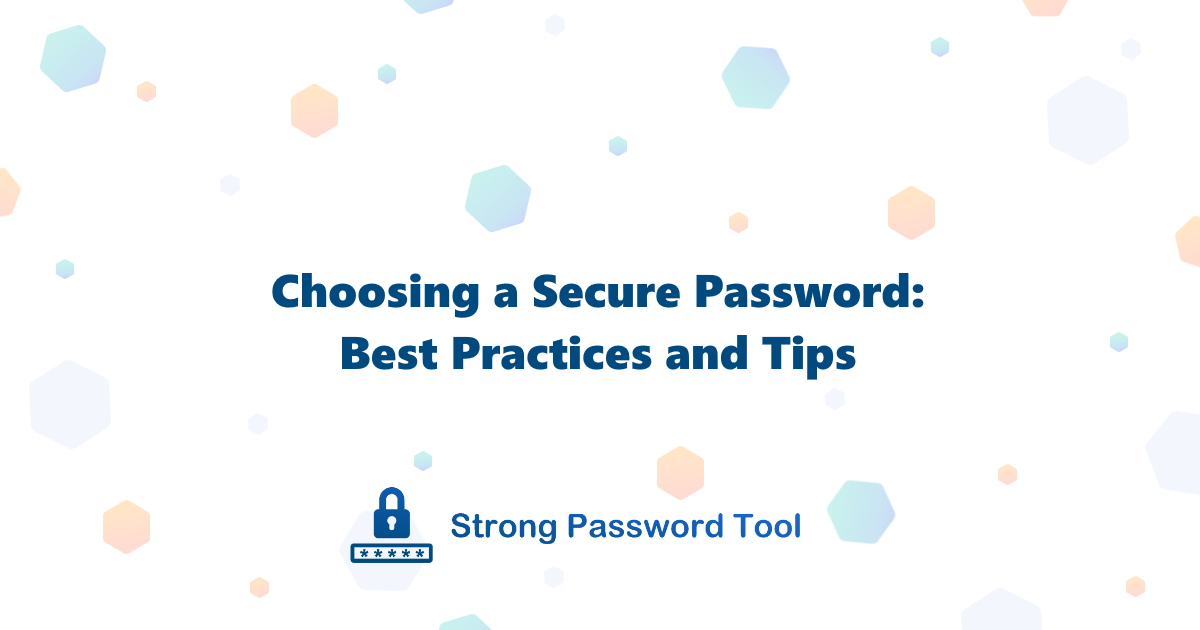Choosing a secure password is crucial to protect your online accounts from unauthorized access. This blog post explores the best practices and tips for creating strong passwords that will enhance the security of your digital identity. By implementing these strategies, you can safeguard your personal information and minimize the risk of cyber threats.
1.) Understand the Importance of Strong Passwords:
Strong passwords are crucial for protecting your digital accounts and preventing unauthorized access. Weak passwords put you at risk of identity theft, financial fraud, and privacy breaches. By using strong passwords, you significantly reduce the chances of your accounts being compromised. Recognizing the potential risks and consequences of weak passwords helps you understand the urgency of adopting strong password practices and prioritize your digital security.
2.) Best Practices for Creating a Secure Password:
Follow these essential best practices to ensure your passwords are strong and secure:
- Length and Complexity: Make your passwords at least 12 characters long and include a mix of uppercase and lowercase letters, numbers, and special characters. Avoid common words or predictable patterns.
- Unique Passwords: Create a unique password for each of your accounts. Avoid using the same password across multiple platforms to minimize the impact of a potential breach.
3.) Tips to Enhance Password Security:
Take these additional steps to boost the security of your passwords:
- Password Management Tools: Use password managers to generate and securely store complex passwords. They help you manage multiple passwords without the risk of forgetting or using weak ones.
- Regular Updates: Regularly update your passwords to stay ahead of potential threats. Avoid reusing passwords across different accounts to prevent a single breach from affecting multiple platforms.
- Two-Factor Authentication (2FA): Enable 2FA whenever available. It adds a second layer of verification, such as a unique code or biometric scan, making it harder for attackers to gain unauthorized access.
4.) Common Mistakes to Avoid:
Steer clear of these common password mistakes to protect your accounts:
- Easily Guessable Passwords: Avoid using common words, personal information, or predictable patterns as passwords. Hackers can easily guess or crack these types of passwords.
- Password Reuse: Never use the same password for multiple accounts. If one account is compromised, all linked accounts become vulnerable.
- Sharing Passwords: Avoid sharing passwords with others, even close friends or family members. It increases the risk of unauthorized access and compromises your account security.
5.) Keeping Up with Evolving Password Security:
Stay informed about the latest advancements in password security to protect your digital accounts.
Here are some key points to remember:
- Emerging Technologies: Explore new technologies like passwordless authentication, which eliminates the need for traditional passwords. Biometric authentication, such as fingerprint or facial recognition, offers enhanced security. Multi-factor authentication (MFA) adds an extra layer of verification.
- Stay Updated: Keep an eye on password-related news, data breaches, and security updates. Being aware of the latest threats and vulnerabilities helps you take proactive measures to secure your accounts.
- Password Cracking Techniques: Stay informed about advancements in password cracking techniques. By understanding the methods used by hackers, you can better protect your passwords and choose stronger security measures.
By staying informed and adopting the latest password security practices, you can effectively safeguard your digital accounts from unauthorized access.
By following the best practices and tips outlined in this blog post, you can significantly enhance the security of your passwords and protect your digital identity. Remember, investing time and effort into creating strong passwords is a small price to pay for the peace of mind and protection it provides in the digital world.

